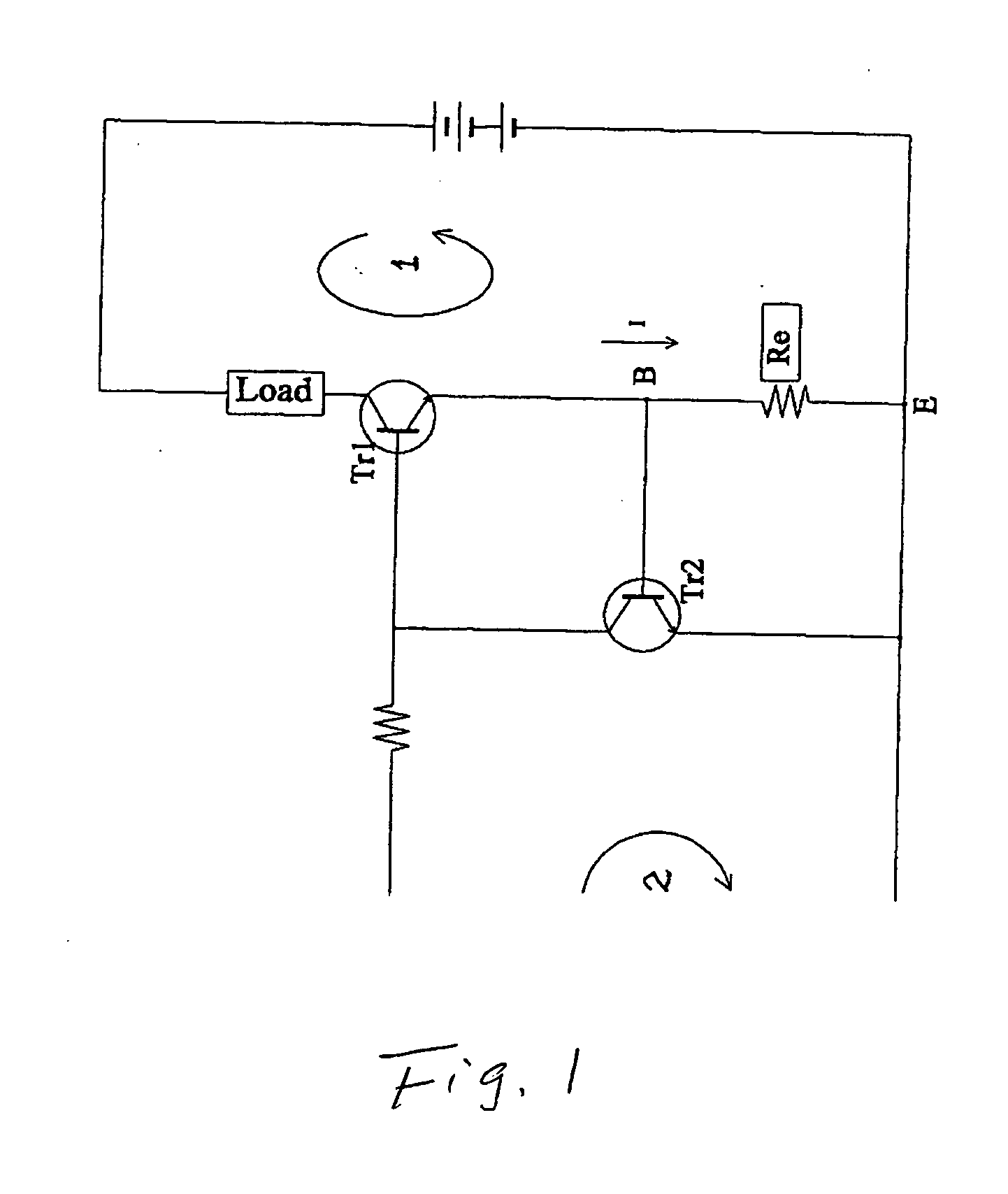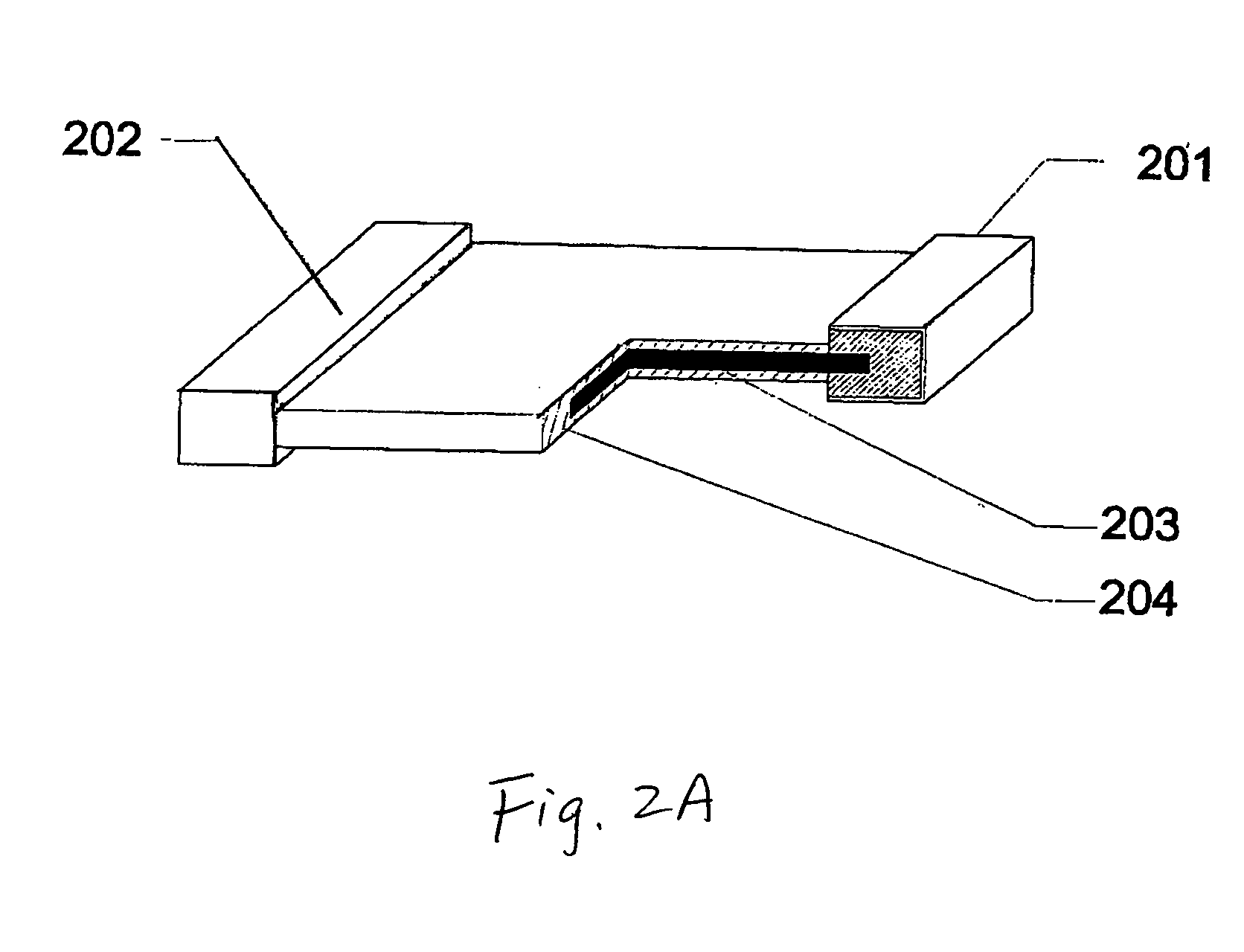Current detector with improved resistance adjustable range and heat dissipation
- Summary
- Abstract
- Description
- Claims
- Application Information
AI Technical Summary
Benefits of technology
Problems solved by technology
Method used
Image
Examples
Embodiment Construction
[0025] Referring to FIG. 3 for a current detector of this invention. The current detector includes a detector body 1 and terminals 2 disposed on either sides of the body 1. The detector body is formed as a multiple-layer structure includes a middle substrate layer 10. In a preferred embodiment, the substrate layer 10 is formed as an aluminum oxide layer or a metal layer 10. A bottom heat dissipation layer 11 is attached on the bottom surface of the substrate 10 and a top heat dissipation layer 12 is attached on the top surface of the substrate 10. These heat dissipation layers 11 and 12 composed of FRP epoxy or other attachment agents with high heat conductivity. A resistive layer 13 is formed on top of the top heat dissipation layer 12 and the resistive layer 13 is covered with a protective layer 15. A heat dissipation layer 14, which preferable is a cooper layer is formed below the bottom heat dissipation layer 11 and the heat dissipation layer 14 is covered and protected by a bot...
PUM
 Login to View More
Login to View More Abstract
Description
Claims
Application Information
 Login to View More
Login to View More - Generate Ideas
- Intellectual Property
- Life Sciences
- Materials
- Tech Scout
- Unparalleled Data Quality
- Higher Quality Content
- 60% Fewer Hallucinations
Browse by: Latest US Patents, China's latest patents, Technical Efficacy Thesaurus, Application Domain, Technology Topic, Popular Technical Reports.
© 2025 PatSnap. All rights reserved.Legal|Privacy policy|Modern Slavery Act Transparency Statement|Sitemap|About US| Contact US: help@patsnap.com



